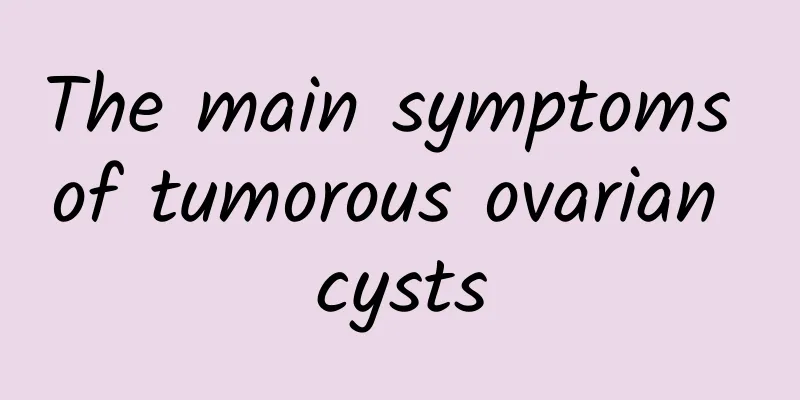What are the pathological manifestations of chronic cervicitis? 5 pathological manifestations of chronic cervicitis you should know

|
Cervicitis is a disease that women are prone to. This type of disease has a great impact on women's physical health. Once women suffer from such a disease, they need to receive timely treatment, which will be of great help in controlling their own disease. So what are the pathological manifestations of chronic cervicitis? Chronic cervicitis also has many manifestations, so before treating it, you need to understand this issue first. Pathological manifestations of chronic cervicitis: There are several most common pathological manifestations of chronic cervicitis in women: cervical polyps, cervical cysts, endocervicitis, cervical erosion, and cervical hypertrophy. 1. Cervical polyps: Under the long-term stimulation of chronic cervicitis, the cervical canal mucosa proliferates locally. Due to the rejection effect of the uterus, the proliferating mucosa gradually protrudes from the cervical opening, forming polyps. 2. Cervical cyst: Cervical natrium cyst, referred to as natrium cyst. This is a small bluish-white cyst protruding from the surface of the cervix. 3. Endocervicitis: Endocervicitis. The inflammation is limited to the endocervical mucosa and the tissues underneath. Clinically, the vaginal part of the cervix is smooth, but the cervical opening is congested or blocked by purulent secretions. 4. Cervical erosion: When the epidermis of the external os of the cervix falls off and is replaced by another epithelial tissue at the os of the cervix, the new epithelium covering the surface is very thin, and you can even see the blood vessels and red tissue underneath. This is called cervical erosion. 5. Cervical hypertrophy: Due to the long-term stimulation of chronic cervicitis, the cervix becomes congested and edematous, and the glands and stroma proliferate, causing the cervix to hypertrophy to varying degrees. After understanding the pathological manifestations of chronic cervicitis, women also need to pay attention to their own diet when treating chronic cervicitis. Women should not choose greasy, spicy, or cold foods. These foods are of no help in the treatment of chronic cervicitis. If they are still chosen, it will cause other problems in the body. |
<<: What are the causes of cervical erosion? Introduction to 6 causes of cervical erosion
Recommend
Why is it more common to get vaginitis during pregnancy? Can medication be used to treat it?
Why is vaginitis more likely to occur during preg...
Which is less harmful, surgical abortion or medical abortion? Let's take a look at the results of the comparison between surgical abortion and medical abortion
For women who have an unexpected pregnancy, the m...
Does uterine malformation make miscarriage more likely?
Uterine malformations may increase the risk of mi...
Do I need to do a checkup before medical abortion?
Many friends who want to terminate pregnancy thro...
How long does it take for bacterial vaginosis to heal?
How long does it take for bacterial vaginosis to ...
Can I take anti-inflammatory drugs for cervical inflammation?
Cervical inflammation can be treated with anti-in...
Why does pelvic inflammatory disease cause abdominal distension? Because of pelvic inflammation
In addition to lower abdominal pain, fever, and a...
What are the main causes of multiple uterine fibroids?
What are the causes of multiple uterine fibroids?...
Which types of people are more likely to develop uterine fibroids?
The incidence of uterine fibroids is becoming you...
How long will the pregnancy reaction last after abortion? 3 reasons why the pregnancy has not disappeared
How long it takes for pregnancy symptoms to disap...
Precautions for medication in patients with cervical precancerous lesions
Patients with cervical precancerous lesions suffe...
Are ovarian cysts serious? What are the symptoms?
Are ovarian cysts serious? What are the symptoms?...
What are the safe abortion methods?
The best way to deal with an unexpected pregnancy...
What are the symptoms of cervical erosion?
Cervical erosion is a common gynecological diseas...
What is the cause of recurrent spontaneous abortion?
Causes of recurrent spontaneous abortion: Recurre...









